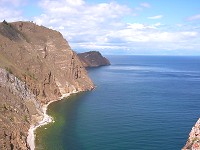| Origin & Development | |
|
Legends & Fairy tales • Earth's Crust Thickness • Underwater Relief • Landscapes • History & Formation • Seismic Activity • | |
| History of Lake Baikal | |
|
History of Explorations • Inhabitants & Settlers • First maps of Baikal • Archaeological Sites • | |
| Lake Baikal Climate | |
|
Introduction • Fogs • Winds & Waves • Ice Conditions • | |
| Fauna & Vegetation | |
|
Mammals • Baikal seal - Nerpa • Ichthyofauna • Invertebrates • Vegetation • | |
| Water of Lake Baikal | |
|
Colour • Transparency • Temperature • Pressure • Depth • Currents • Budget • Chemical Composition • Pollution • | |
| Recreational Areas | |
|
Circumbaikal Railway • Peschanaya Bays • Olkhon Island • Chivirkuysky Gulf • Wooden Irkutsk • Trans-Siberian Railway • | |
| People of Lake Baikal | |
|
People of Siberia • Buryat nation in Baikal • Russians in Baikal • | |
|
| |
The Thickness of the Earth's Crust
Thickness of the Earth's crust: under Siberian platform: 36 - 42 km under the mountain ridges of Pribaikalye: 45 - 55 km Min. thickness to the Earth's crust subface in the center of the Baikal basin: 34 km Cenozoic sediment thickness in the basin: 3 - 8.5 km Crystalline Earth's crust attenuation under the Baikal rift: 3 - 7 km The lithosphere thickness: under Siberian platform: 200 km under mountains ridges of Sayano-Baikalian highland: 40 - 50 km under the mountainous western part of Mongolia: 50 - 70 km under Zabaikalian highland and high plains of Eastern Mongolia: 100 - 150 km under the Baikal basin: 60 - 80 km |
